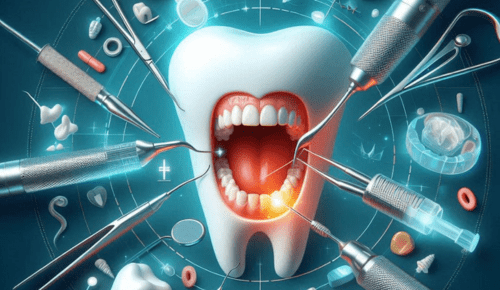We all strive for shiny white teeth; after all, not only do they give you a beautiful smile, but they also ensure good oral health. Yet, in some cases, tooth extraction becomes inevitable. Situations like this demand an expert to handle the tooth removal process.
When facing a dental extraction in Massachusetts, you must look for a highly experienced dentist in Norfolk, MA, as they can make a massive difference by ensuring a smooth procedure and a comfortable recovery.
Who might need a dental extraction?
A tooth extraction or dental extraction is a dental procedure that involves completely removing the tooth from its socket. The process is also commonly known as ‘pulling’ a tooth.
Although healthcare providers prefer to save the natural tooth at all costs, tooth removal becomes necessary in situations like-
- Severe tooth decay, a.k.a. Cavities
- Severe gum diseases
- Fractured tooth
- A dental injury
- Impacted tooth
- Overcrowding of teeth
Dental extraction methods
Depending on various factors, a dental professional may choose to go for either a simple dental extraction or a surgical dental extraction.
- Simple dental extraction: A simple dental extraction involves removing a tooth that is visible in the mouth. The process involves using local anesthesia to numb the area and reduce the pain, while instruments like elevators and forceps are used to remove the tooth.
- Surgical, dental extraction: Situations like incompletely erupted teeth or a fracture under the gumline require surgical, dental extraction. The dental professional will make an incision or drill to remove it entirely.
Surgical removal is suitable for more complex extractions, and it may involve pain, which is why the professionals use general anesthetics in a hospital setting.
What happens during a dental extraction procedure?
Here’s what happens when you go to a dentist for a dental extraction procedure.
- After taking the x-rays to check the bone levels and determine the extent of damage, your dentist will discuss the treatment and sedation options with you. If you want, your dentist will sedate you using nitrous oxide, oral conscious sedation, or intravenous (IV) sedation.
- Next, they’ll administer local anesthesia to numb the affected area and loosen the tooth from its socket.
- In some cases, the dentist may have to make incisions in your gum to access a badly decayed or broken tooth.
- After removing the tooth, they’ll clean the socket and disinfect the area. In some cases, the dentist may even place a dental bone graft to prevent jaw bone loss before finally stitching the area.
- After completing the process, the dentist will give you a gauze to firmly close the extraction site to slow down bleeding and prevent clot formation. The dentist will remove the gauze as soon as the bleeding stops or slows down significantly.
Risks and aftercare
Although highly unlikely, a tooth extraction procedure may lead to some complications in some cases. The most common complications are as follows:
- Post-surgical infection in the extraction site
- A dry socket
- Maxillary sinus perforation
- A nerve injury
- Delayed healing
- Swelling, bleeding, and discomfort are also some common side effects of a tooth extraction procedure.
However, when it comes to recovery and healing, most people are able to return to their usual lifestyle within 48 to 72 hours of the surgery. However, the recovery time may also vary depending on the complexity of your case. Here’s what you can do to ensure a quick recovery after tooth extraction.
- Ensure to keep the extraction site clean by rinsing the area using an antimicrobial mouthwash at least twice a day.
- Avoid brushing directly over the extraction side until your dentist allows you to.
- Your dentist may prescribe pain relievers or antibiotics; make sure to take all the medications as directed.
- Avoid strenuous activities like gym or other sports for about 48 to 72 hours as it may elevate the heart rate and increase the bleeding and discomfort at the extraction site.
Despite being a standard dental procedure, aftercare is necessary to minimize recovery time after a tooth extraction procedure. Moreover, it is also essential to follow the instructions of your dentist to avoid any complications.




